| Meld | Scoring Value | Description |
|---|
| Marriage | This meld consists of the player having and showing the King and Queen in the trump suit | 20 Points |
| 3 Card Sequence | This is a meld of three cards, in direct sequential order, all of the same suit. |
20 |
| 3 Card Sequence With trump King and Queen | This is a meld of three cards, in direct sequential order, all of the same suit, which contains within that sequence the King and Queen of the trump suit. |
40 |
| 4 Card Sequence | This is a meld of four cards, in direct sequential order, all of the same suit. | 50 |
| 4 Card Sequence With trump King and Queen | This is a meld of four cards, in direct sequential order, all of the same suit, which contains within that sequence, the King and Queen of the trump suit. |
70 |
| 5+ Card Sequence | This is a meld of five cards or more, in direct sequential order, all of the same suit. | 100 |
| 5+ Card Sequence With trump King and Queen | This is a meld of five or more cards, in direct sequential order, all of the same suit, which contains within that sequence, the King and Queen of the trump suit. | 120 |
| Four Aces or Four Kings or Four Queens | This is a meld consisting of either four Aces, four Kings or four Queens, or. | 100 |
| Four Jacks | This meld consists of all four Jacks from the deck. | 200 |
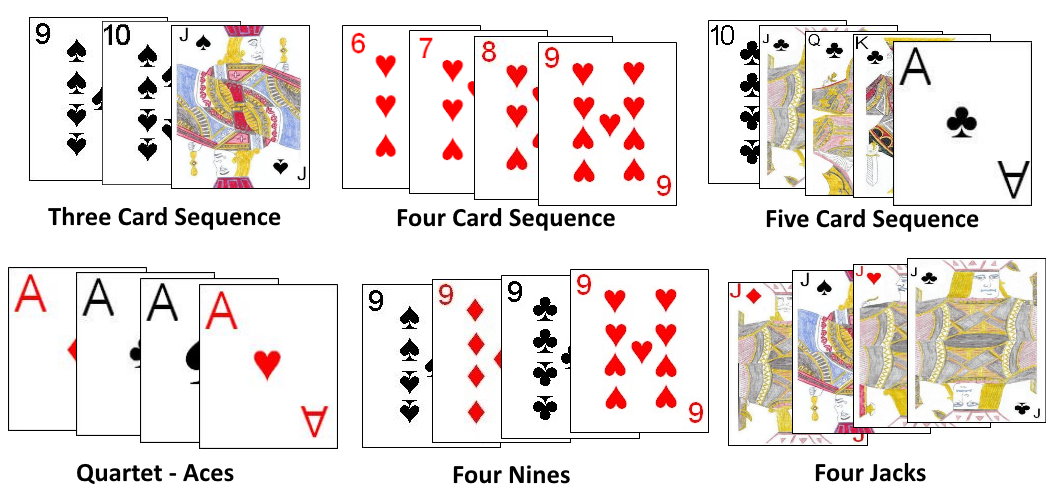
 As this game is designed to be played by four players in two partnerships, one of the first orders of business is usually to determine the partnerships (if this is not already predetermined). One method this can be determined is to have each player draw a card from the shuffled, face-down deck. The players drawing the two highest ranked cards play as one partnership against the players drawing the two lowest ranked cards. If two or more players draw cards of the same denomination, those players should draw new cards, continuing to draw cards until drawing a card that has not yet been previously drawn by any other player. The player drawing the highest card of all will be set as the first dealer, with the deal rotating in a counter-clockwise direction around the table after each hand. Each player should sit at the table in such a manner that his partner is sitting directly across from him at the table.
As this game is designed to be played by four players in two partnerships, one of the first orders of business is usually to determine the partnerships (if this is not already predetermined). One method this can be determined is to have each player draw a card from the shuffled, face-down deck. The players drawing the two highest ranked cards play as one partnership against the players drawing the two lowest ranked cards. If two or more players draw cards of the same denomination, those players should draw new cards, continuing to draw cards until drawing a card that has not yet been previously drawn by any other player. The player drawing the highest card of all will be set as the first dealer, with the deal rotating in a counter-clockwise direction around the table after each hand. Each player should sit at the table in such a manner that his partner is sitting directly across from him at the table.
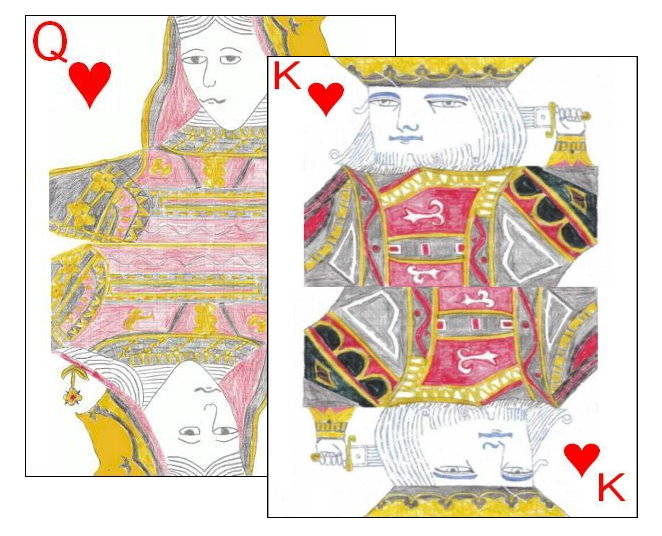
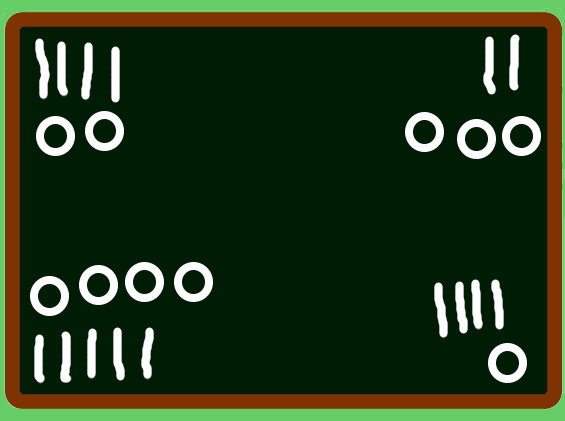 During each hand, the dealer will begin each hand by dealing each player a total of nine cards. Dealing is done in face-down batches of three cards in a counter-clockwise direction around the table. In some cases extra hands may be dealt (see below).
During each hand, the dealer will begin each hand by dealing each player a total of nine cards. Dealing is done in face-down batches of three cards in a counter-clockwise direction around the table. In some cases extra hands may be dealt (see below).
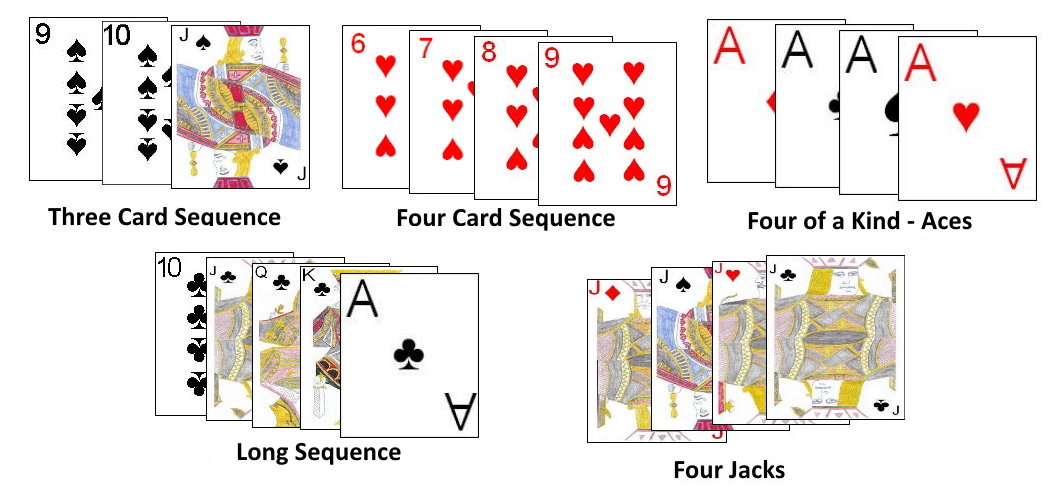
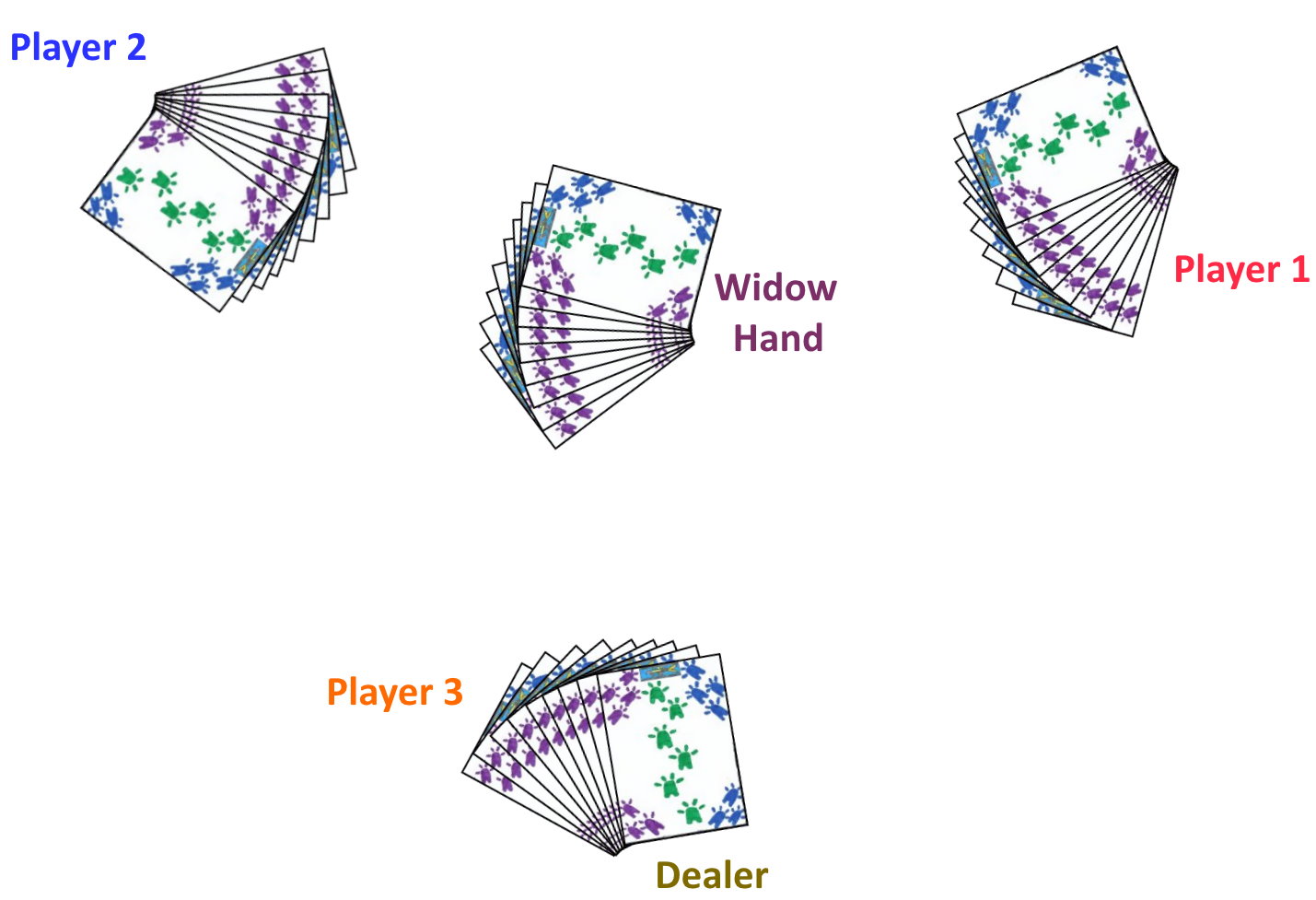
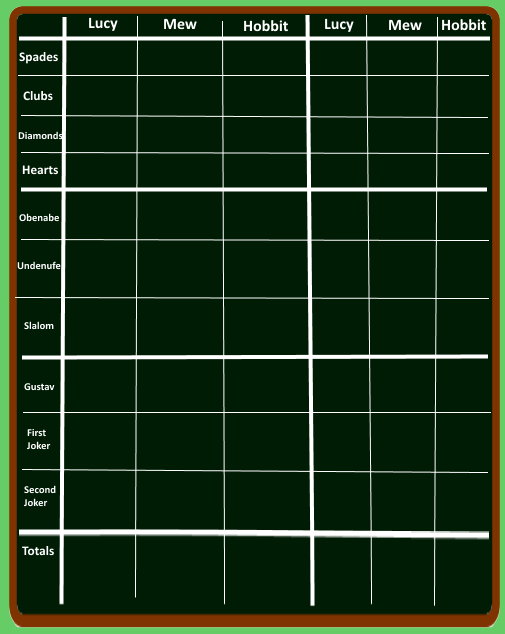 Determination of seating positions and first dealer are exactly as described in standard Jass, above. After each deal, the role of dealer rotates around the table in a counter-clockwise direction. Scoring for Coiffeur-Schieber is traditionally recorded on a slate using chalk. Since the game will consist of exactly 30 hands or deals, the slate is usually marked in such a way as to make recording this easier. Thus, usually a series of columns are drawn, usually two columns for each player and a column listing each deal type possible during the game (described later). A horizontal line is thus drawn along the slate for each game type as well as a "Totals" column at the bottom of the slate. If a slate is not available, this same scoring mechanism can
be recreated using a sheet of paper and a pencil.
Determination of seating positions and first dealer are exactly as described in standard Jass, above. After each deal, the role of dealer rotates around the table in a counter-clockwise direction. Scoring for Coiffeur-Schieber is traditionally recorded on a slate using chalk. Since the game will consist of exactly 30 hands or deals, the slate is usually marked in such a way as to make recording this easier. Thus, usually a series of columns are drawn, usually two columns for each player and a column listing each deal type possible during the game (described later). A horizontal line is thus drawn along the slate for each game type as well as a "Totals" column at the bottom of the slate. If a slate is not available, this same scoring mechanism can
be recreated using a sheet of paper and a pencil.
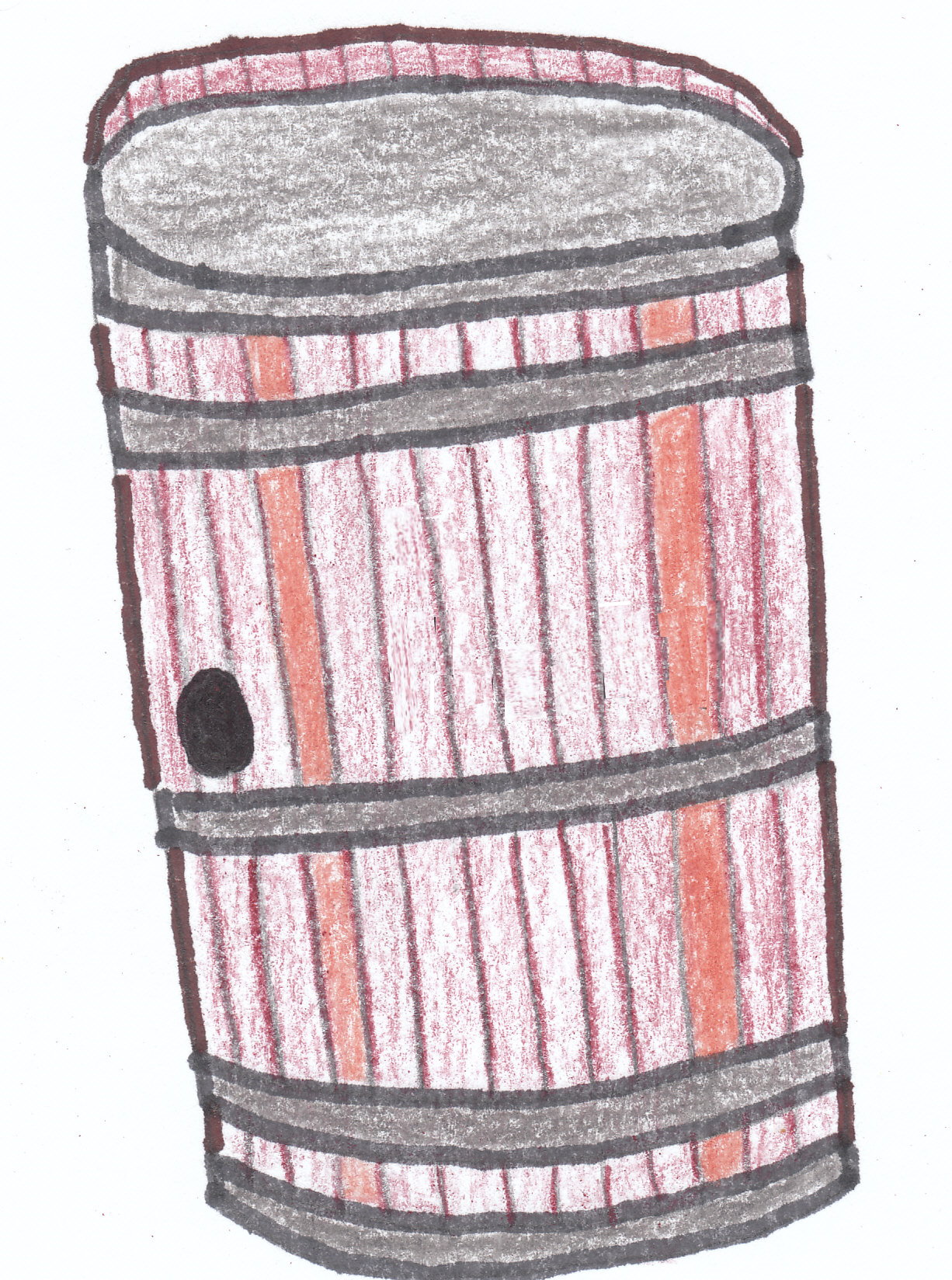 If a player passes instead of naming a declaration, the next player in turn then has the option of naming a game to be played. If this player also passes, the dealer then has the option to name the game type. If all three players initially pass, the original first player MUST make a bid (called being in the barrel), and must follow the normal rules for the declaration of game type.
If a player passes instead of naming a declaration, the next player in turn then has the option of naming a game to be played. If this player also passes, the dealer then has the option to name the game type. If all three players initially pass, the original first player MUST make a bid (called being in the barrel), and must follow the normal rules for the declaration of game type.
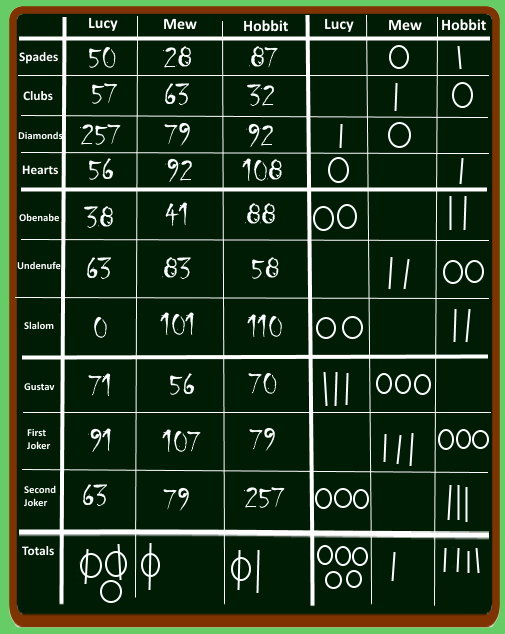 In addition, certain other events may earn points during the hand:
In addition, certain other events may earn points during the hand:

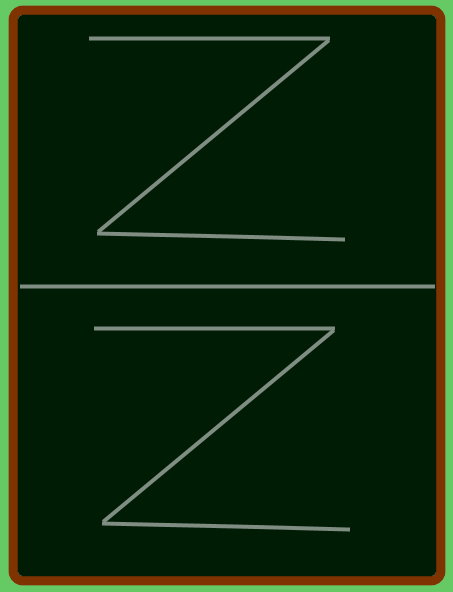 Schieber Jass: As mentioned previously, Schieber Jass is the most
common Jass variant that is liable to be encountered. In addition to the
common method of play for Schieber Jass as described at the top of this page,
the following slightly differing rule set is also quite common. This Jass
variant, as most of the games of the Jass type, is traditionally played with the Swiss pack, but can also be played equally well with a stripped down 36 card French suited deck. The standard ranking of the cards in Schieber Jass is the same as that used in most other Jass type games. This ranking is as follows (from high to low): Ace, King, Queen, Jack, 10, 9, 8, 7, 6. However, in hands in which a trump suit has been defined, the ranking of the cards in that specific trump suit are somewhat different: Jack, 9, Ace, King, Queen, 8, 7, 6.
Schieber Jass: As mentioned previously, Schieber Jass is the most
common Jass variant that is liable to be encountered. In addition to the
common method of play for Schieber Jass as described at the top of this page,
the following slightly differing rule set is also quite common. This Jass
variant, as most of the games of the Jass type, is traditionally played with the Swiss pack, but can also be played equally well with a stripped down 36 card French suited deck. The standard ranking of the cards in Schieber Jass is the same as that used in most other Jass type games. This ranking is as follows (from high to low): Ace, King, Queen, Jack, 10, 9, 8, 7, 6. However, in hands in which a trump suit has been defined, the ranking of the cards in that specific trump suit are somewhat different: Jack, 9, Ace, King, Queen, 8, 7, 6.
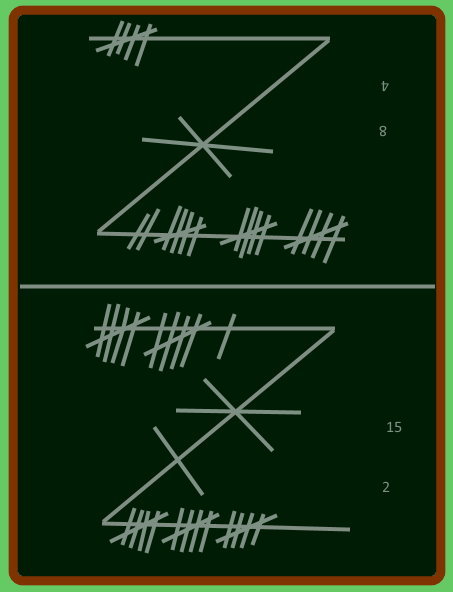 Because this total may be reached during the middle of a hand, a player may feel that his team has won the current game during the middle of a hand. A player may announce this at any time during the hand, in which case play immediately ceases to determine if that team did in fact win. Thus, once a player makes this declaration, play is stopped. If a player who had the King and Queen for a stock may immediately declare it, scoring for it, and then previously played cards in tricks are examined and scores calculated. If the team declaring they have won has managed to earn 3000 or more points, they are declared the winner regardless of the number of points the other team may have. However, if they failed to reach 3000 points, they immediately lose the game. Note that, after one player has announced they believe they are the winners of said game on the first trick of the hand, the opponents may also declare they believe they have won the game as well. In this case, if both teams have earned 3000 points, the points earned during the hand are calculated in a very specific order: Stock, Card Points, Weis.
Because this total may be reached during the middle of a hand, a player may feel that his team has won the current game during the middle of a hand. A player may announce this at any time during the hand, in which case play immediately ceases to determine if that team did in fact win. Thus, once a player makes this declaration, play is stopped. If a player who had the King and Queen for a stock may immediately declare it, scoring for it, and then previously played cards in tricks are examined and scores calculated. If the team declaring they have won has managed to earn 3000 or more points, they are declared the winner regardless of the number of points the other team may have. However, if they failed to reach 3000 points, they immediately lose the game. Note that, after one player has announced they believe they are the winners of said game on the first trick of the hand, the opponents may also declare they believe they have won the game as well. In this case, if both teams have earned 3000 points, the points earned during the hand are calculated in a very specific order: Stock, Card Points, Weis.
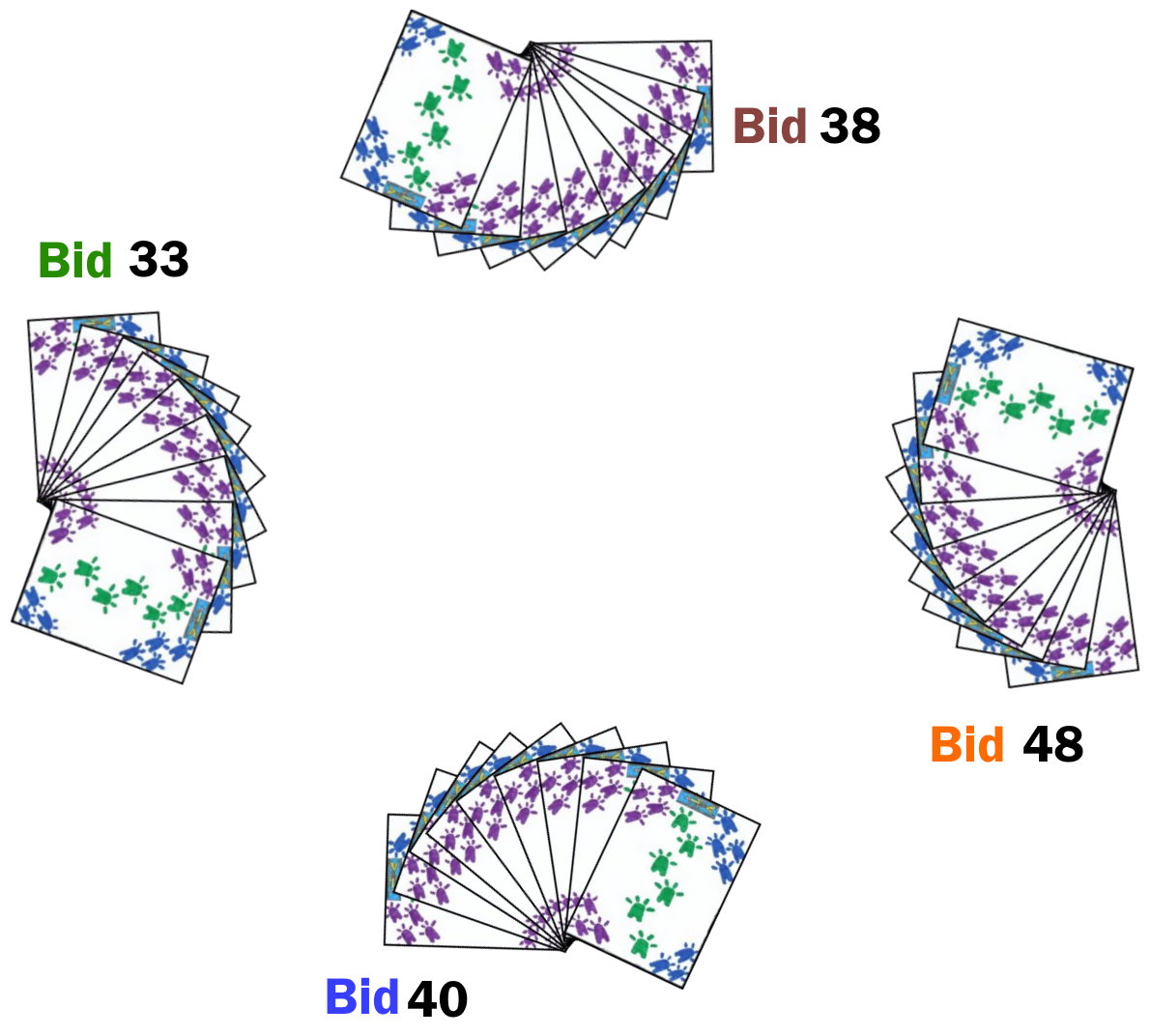 After the cut has been completed, the dealer then begins dealing the cards, in packets of three face-down cards to each player, starting with the player to his immediate right. He continues dealing until the entire deck has been dealt out. In the three player version each player will receive twelve total cards and in a four player game each player will receive nine.
After the cut has been completed, the dealer then begins dealing the cards, in packets of three face-down cards to each player, starting with the player to his immediate right. He continues dealing until the entire deck has been dealt out. In the three player version each player will receive twelve total cards and in a four player game each player will receive nine.
 The ranking of the cards in the deck for the non-trump suit are as follows (from high to low): Ace, King, Queen, Jack, 10, 9, 8, 7, 6. The ranking of the cards in the trump suit is slightly different, as follows (also shown high to low): Jack, 9, Ace, King, Queen, 10, 8, 7, 6.
The ranking of the cards in the deck for the non-trump suit are as follows (from high to low): Ace, King, Queen, Jack, 10, 9, 8, 7, 6. The ranking of the cards in the trump suit is slightly different, as follows (also shown high to low): Jack, 9, Ace, King, Queen, 10, 8, 7, 6.
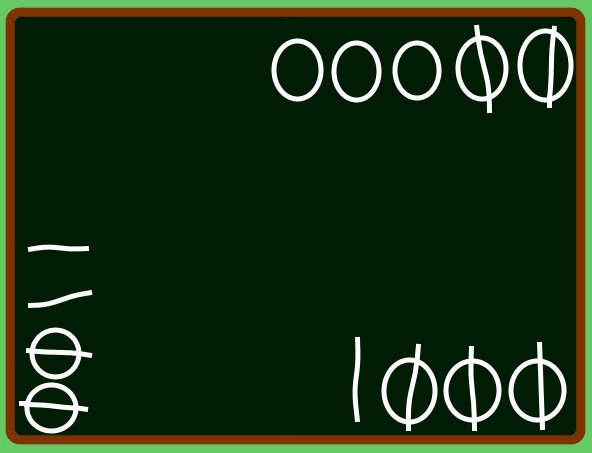 As in some of the other games of this type, score is actually recorded with game points in the form of sticks and potatoes (lines and circles) recorded on a slate board with a piece of chalk. Using this scoring method, the slate is placed in the middle of the table and each player is designated a corner of this slate (with one
corner unused). Thus some (but not all) players during a hand may receive a certain number of such sticks (positive scores) or potatoes (negative scores) during each hand. The following list should be consulted in order to determine the scores awarded for the hand. The first event that can describe the outcome of the current hand is used to determine the scoring for that hand (thus only one the most appropriate of the following should be applied to any specific hand).
As in some of the other games of this type, score is actually recorded with game points in the form of sticks and potatoes (lines and circles) recorded on a slate board with a piece of chalk. Using this scoring method, the slate is placed in the middle of the table and each player is designated a corner of this slate (with one
corner unused). Thus some (but not all) players during a hand may receive a certain number of such sticks (positive scores) or potatoes (negative scores) during each hand. The following list should be consulted in order to determine the scores awarded for the hand. The first event that can describe the outcome of the current hand is used to determine the scoring for that hand (thus only one the most appropriate of the following should be applied to any specific hand).
